The stories of Ronald Cotton and Richard Anthony Jones
both incarcerated for crimes they did not commit.
Ronald Cotton was exonerated in 1995, after spending over 11 years in prison for crimes he did not commit. His convictions were based largely on an eyewitness misidentification made by one of the victims, Jennifer Thompson-Cannino. Cotton and Thompson-Cannino are now good friends and leading advocates for eyewitness identification reform.
Ronald Cotton was exonerated in 1995, after spending over 11 years in prison for crimes he did not commit. His convictions were based largely on an eyewitness misidentification made by one of the victims, Jennifer Thompson-Cannino. Cotton and Thompson-Cannino are now good friends and leading advocates for eyewitness identification reform.
Free at Last -- Anthony Ray Hinton





This is a lesson we all should learn from that just because the Prosecutor says he did it does not mean he did it. It is the Prosecutors’ job it to convict someone no matter what.
Now we have to figure out how to stop this from happening again.
I am now wondering how many people were put to death that were innocent just because of ineffective council and a jury that wanted to go home early or liked the way the prosecutor talked or acted so they believed him.
I Earl Wallace Woodlen, Jr. is against the death penalty.
I’m Earl Wallace Woodlen, Jr.
JUST MERCY: A STORY OF JUSTICE AND REDEMPTION’ BY BRYAN STEVENSON
ANTHONY RAY HINTON'S ATTORNEY

TV BROADCAST OF HIS SECOND TRIAL AND PROPOSED RELEASE DATE
Anthony Wright
25 years later, freed by DNA evidence:
'It's the greatest day of my life'
I’m Earl Wallace Woodlen, Jr.
Video at the seen of Anthony Wright's Release





VIDEO'S OF PRISONS THAT HAVE MANY INMATES ON DEATH ROW AND HOW THEY ARE BEING TREATED AMONG OTHER THINGS.
A BRONX TALE
SIX IMPRISONED FOR EIGHTEEN YEARS AND INNOCENT.
Eric Glisson, Cathy Watkins, Carlos Perez, Devon Aires, Michael Cosme and Israel Vasquez. Eric was twenty years old with a week old baby when arrested.
The witness Miriam Tavares lied, she could not see anything from the window she was looking through and the police did not check on her story they already had their minds made up.
Another person Cathy Gomez who was sixteen at the time was used by the detectives and who at the time could not read or write English told the detectives she did not see or know anything but they just placed papers in from of her to sign and told her she was not in any trouble. She only testified because they told her she would be arrested if she did not.
Jose Rodriguez and Gilbert Vega of the Sex, Money, Murder Gang confessed they did the murder.
Attorney Peter A. Cross took the case for free and got results that freed first Eric Glisson and Cathy Watkins. The others were later freed as well.
John O'Malley a investigator for the US Attorney in New York looked into the case and did what he could to help.
Attorney Peter A. Cross & his assistant Charmaine Chesterhttp://www.evw.com/attorney/peter-a-cross/
Five Wrongfully Convicted Of Homicide Awarded $40 million

Five innocent people who each spent nearly 20 years in the slammer for a murder they didn’t commit are dropping their malicious-prosecution suits in exchange for $40 million, Peter Cross, a lawyer for one of the ex-inmates, said Thursday.
Eric Glisson, Cathy Watkins, Carlos Perez, Devon Ayers and Michael Cosme were found guilty in the 1995 shooting of livery driver Baithe Diop, who was killed in The Bronx amid a rash of 1990s cabby holdups.
While in jail, Glisson learned Diop was actually killed by the Sex Money Murder gang, and he sent a letter with that info to the Manhattan US Attorney’s Office.
http://nypost.com/2016/04/22/five-wrongfully-jailed-murderers-get-40m-payout/

The witness Miriam Tavares lied, she could not see anything from the window she was looking through and the police did not check on her story they already had their minds made up.

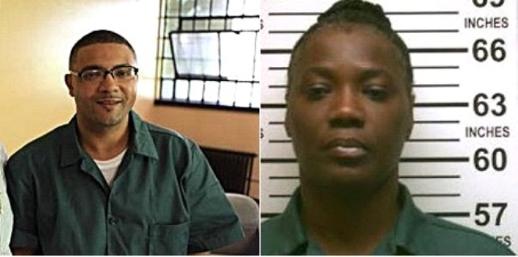




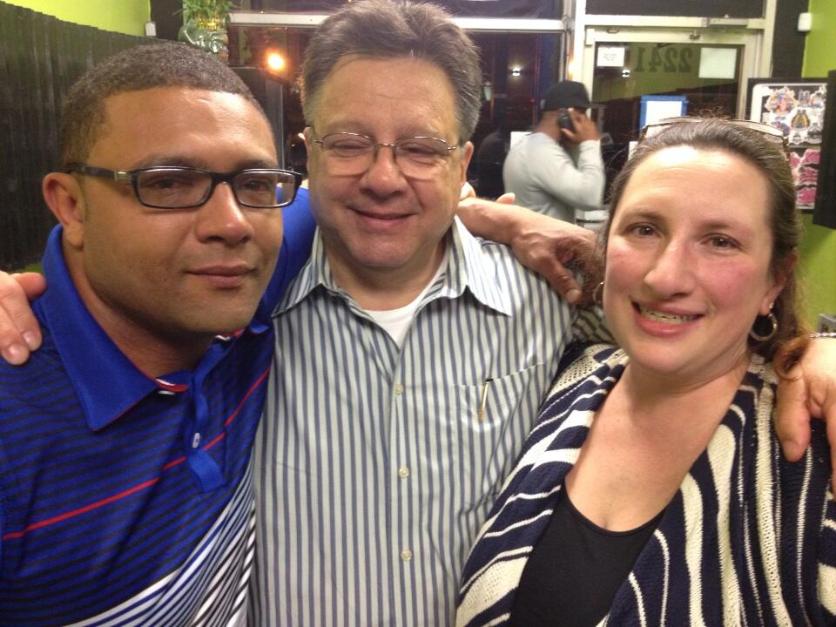


How One Inmate Changed The Prison System From The Inside
The Imprisonment of Martin Sostre
How One Inmate Changed The Prison System From The Inside

Frame Up! The Imprisonment of Martin Sostre, a film by Joel Sucher and and Steven Fischler, was released in 1974 by Pacific Street Films.
Who Are The Angola Three (3)
WRONGFUL CONVICTION JIMMY DENNIS




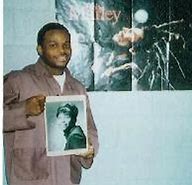
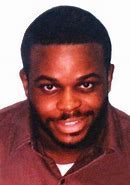

Chang Gang
On September 16, 1996 Alabama was the first site of a Female Chang Gang


Taken from the Chicago Tribune by Eric Zorn
On Friday, Feb. 25, 1983, 10-year-old Jeanine Nicarico
was abducted from her home in unincorporated Naperville home, brutally raped
and slain. Investigators narrowed in on a trio of Aurora mopes: Alex Hernandez,
Stephen Buckley and Rolando Cruz. Cruz
and Hernandez had been telling demonstrably false tales about the murder for
various reasons, but these led to a grand jury indictment of the three
men on March 8, 1984. The case was built on unreliable statements by
would-be informants and contained no physical evidence against the defendants.
When it became clear the men would go to trial, Du Page County Sheriff's
Detective John Sam, who helped lead the investigation in the early months,
resigned from the department in disgust. Sam has said his disgust was heightened when the key evidence in
the trial turned out to be a statement prosecutors said Cruz made to detectives
on May 9, 1983.
On Jan 19, 1988, the Illinois Supreme Court overturned
the convictions of Cruz and Hernandez on grounds the men should have been tried
separately. Du Page prosecutors declined to offer Dugan immunity
from the death penalty in the Nicarico murder, so he refused to testify at the
second trials of Cruz and Hernandez in early 1990.
The prosecutors
successfully argued to keep information about his accurate confessions to the
other crimes from the jury and Cruz was again convicted and sentenced to death. Hernandez' second trial ended in a hung jury,
but he was convicted on May 17, 1991 and sentenced to 80 years.
"Someday,
sooner or later, the public will realize what has happened in Nicarico,"
then Kane County State's Atty. Gary Johnson wrote in a 1991 letter to a Du Page
County judge. Johnson, who had served as Stephen Buckley's attorney in the 1985
trial, wrote that this realization "will do to prosecutors what the Rodney
King police beating tapes have done to the police."
In early 1992, Mary Brigid Kenney, the assistant attorney general assigned to
fight his appeal, resigned in protest and urged Atty. Gen Roland Burris
in a letter to stop "this ugly prosecution." "It's not for me to
place my judgment over a jury, regardless of what I think," Burris told
reporters after the resignation. "A jury has found this
individual guilty and given him the death penalty. It is my role to see to it
that it is upheld. That's my job." A 4-3 majority of the Illinois Supreme
Court upheld the Cruz conviction later in 1992 with the astonishing
assertion, "The State's case consisted of physical evidence linking
defendant with the crime." Cruz,
since he was on Death Row, became a cause celebre. And on July, 14, 1994,
the state's high court reversed its earlier ruling and ordered a third trial
for him; the Illinois Appellate Court overturned Hernadez' conviction on Jan
30, 1995.
Two of Sam's former colleagues said Cruz had related to them a vision containing details of the crime. These details were reasonably accurate and therefore incriminating. But the detectives never took notes or wrote up this supposed statement and never told their partners or the grand jury about it. Indeed this blockbuster "vision," which Cruz denies recounting, came out of nowhere just before the trial. Cruz and Hernandez were convicted on Feb. 22, 1985 and sentenced to death. The jury deadlocked on Buckley, and the case against him ultimately was dropped on March 5, 1987.
That same year, Aurora resident Brian Dugan was arrested for the brutal rape and murder of 7-year-old Melissa Ackerman of Somonauk. He confessed to that sex crime and a series of others, and he offered a detailed admission --though not a formal confession -- to the Nicarico murder.
Veteran State Police Lt. Ed Cisowski conducted an in-depth investigation of the Dugan statements starting in November, 1985, and came away 100 percent sure, he said, that Dugan and Dugan alone raped and murdered Jeanine. Nevertheless, DuPage County prosecutors remained skeptical and did not accept Dugan's offer to plead guilty in exchange for another life sentence.
Since a new round of DNA testing had shown Brian Dugan was likely the person who raped Jeanine, the state's new theory of the case was that Cruz, Hernandez and Dugan together committed the crime.
At his third trial in October/November, 1995, Cruz was abruptly acquitted and freed halfway through the trial when one of the officers involved in the so-called vision statement said that he'd discovered documentary evidence suggesting the story could not have happened the way authorities said it happened. Charges were dropped against Alex Hernandez on Dec. 8, 1995.
In the spring of 1999, seven member of the DuPage County law enforcement community were tried in criminal court on charges that they conspired to frame Rolando Cruz for Jeanine's murder. They, too were acquitted. Cruz, Hernandez and Buckley reached a $3.5 million civil settlement with DuPage County on September 26, 2000. As Cruz was going before the state prisoner review board for a full pardon, on Nov. 15, 2002 , DuPage County state's attorney Joseph Birkett announced that the latest and most sophisticated round of DNA testing showed that Brian Dugan's DNA matched DNA evidence at the crime scene to a scientific certainty. Today, November 29, 2005, Birkett announced a 15-count murder indictment against Brian Dugan, but would not rule out any other previous suspects from the case.
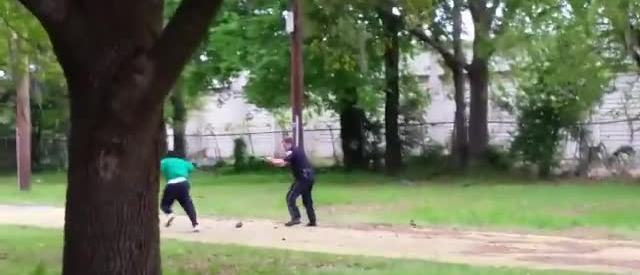


Derrick J. Powell
DOB: 02/06/1987
Race: Black Gender: Male
Offense: Murder 1st
Sentenced to Death: 05/20/2011
Date of Offense: 09/01/2009

Luis G. Cabrera
DOB: 11/07/1969
Race: White Gender: Male
Offense: Murder 1st (2 Counts)
Sentenced to Death: 03/14/2002
Date of Offense: 01/21/1996

James E. Cooke, Jr.
DOB: 12/02/1970
Race: Black Gender: Male
Offense: Murder 1st
Sentenced to Death: 09/17/2012
Date of Offense: 05/01/2005

Michael R. Manley
DOB: 07/29/1974
Race: Black Gender: Male
Offense: Murder 1st
Sentenced to Death: 02/03/2006
Date of Offense: 11/13/1995

DOB: 07/28/1987
Race: Black Gender: Male
Offense: Murder 1st (2 Counts)
Sentenced to Death: 10/11/2012
Date of Offense: 05/04/2010

Adam W. Norcross
DOB: 07/25/1970
Race: White Gender: Male
Offense: Murder 1st
Sentenced to Death: 10/03/2001
Date of Offense: 11/04/1996
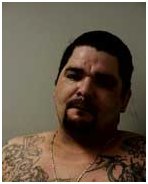
DOB: 02/26/1972
Race: White Gender: Male
Offense: Murder 1st
Sentenced to Death: 09/26/2003

DOB: 03/19/1964
Race: White Gender: Male
Offense: Murder 1st
Sentenced to Death: 08/22/2003

DOB: 02/08/1977
Race: White Gender: Male
Offense: Murder 1st (2 Counts)
Sentenced to Death: 03/14/2002

DOB: 12/30/1974
Race: Black Gender: Male
Offense: Murder 1st (2 Counts)
Sentenced to Death: 06/10/2004

Ralph E. Swan
DOB: 03/25/1971
Race: White Gender: Male
Offense: Murder 1st
Sentenced to Death: 10/03/2001
Date of Offense: 11/04/1996

DOB: 06/06/1974
Race: Black Gender: Male
Offense: Murder 1st
Sentenced to Death: 02/03/2006

DOB: 11/15/1968
Race: Black Gender: Male
Offense: Murder 1st
Sentenced to Death: 07/06/2001
Date of Offense: 03/23/2000

DOB: 10/11/1972
Race: Black Gender: Male
Offense: Murder 1st (2 Counts)
Sentenced to Death: 10/22/1992

DOB: 09/06/1977
Race: White Gender: Male
Offense: Murder 1st
Sentenced to Death: 08/18/1997

DOB: 08/19/1962
Race: Black Gender: Male
Offense: Murder 1st
Sentenced to Death: 03/12/2010

DOB: 09/28/1972
Race: Black Gender: Male
Offense: Murder 1st
Sentenced to Death: 09/20/2006
Below are the links for death row in-mates from across the country.
Arizona: https://corrections.az.gov/node/431
Arkansas: http://www.deathpenaltyinfo.org/category/categories/states/arkansas
California: http://www.cdcr.ca.gov/Capital_Punishment/docs/CondemnedInmateListSecure.pdf
Colorado: http://www.cncpunishment.com/forums/forumdisplay.php?56-Colorado-Male-Death-Row-Inmates
Connecticut: http://www.courant.com/news/connecticut/hc-deathrow-pg,0,871806.photogallery
Delaware: http://doc.delaware.gov/deathrow/inmates.shtml
Florida: http://www.dc.state.fl.us/activeinmates/deathrowroster.asp
Georgia: http://www.deathpenaltyinfo.org/federal-death-row-prisoners
Hawaii: http://www.deathpenaltyinfo.org/category/categories/states/hawaii
Idaho: http://www.idoc.idaho.gov/content/prisons/death_row
Illinois: http://www.reuters.com/article/2011/07/02/us-illinois-deathpenalty-idUSTRE76110Z20110702
Indiana: http://www.clarkprosecutor.org/html/death/rownew.htm
Iowa: http://www.deathpenaltyinfo.org/federal-death-row-prisoners
Kansas: http://www.off2dr.com/smf/index.php?topic=6311.0
Kentucky: http://crime.about.com/od/deathrow/ig/Kentucky-Death-Row-Inmates/
Louisiana (males): http://www.cncpunishment.com/forums/forumdisplay.php?66-Louisiana-Male-Death-Row-Inmates
Louisiana (females): http://www.cncpunishment.com/forums/forumdisplay.php?44-Louisiana-Female-Death-Row-Inmates
Maine: http://www.deathpenaltyinfo.org/category/categories/states/hawaii
Maryland: http://www.deathpenaltyinfo.org/maryland-1
Massachusetts: http://www.deathpenaltyinfo.org/massachusetts-0
Michigan: http://www.deathpenaltyinfo.org/michigan-0
Minnesota: http://www.deathpenaltyinfo.org/minnesota-0
Mississippi: http://www.mdoc.state.ms.us/death_row_inmates.htm
Missouri: http://missourideathrow.com/current-inmates/
Montana: http://mtabolitionco.org/issues/death-row-montana/
Nebraska: http://www.corrections.nebraska.gov/pdf/Death%20Row.pdf
Nevada: http://vegasmurderwatch.com/nvdr.html
New Hampshire: http://www.deathpenaltyinfo.org/new-hampshire-1
New Jersey: http://www.corrections.com/news/article/24014-nj-closing-death-row
New Mexico: http://www.deathpenaltyinfo.org/new-mexico-1
New York: http://www.deathpenaltyinfo.org/new-york-1
North Carolina: https://www.ncdps.gov/Index2.cfm?a=000003,002240,002327,002328
North Dakota: http://www.deathpenaltyinfo.org/north-dakota-0
Ohio: http://www.drc.ohio.gov/death-row
Oklahoma: http://www.cncpunishment.com/forums/forumdisplay.php?77-Oklahoma-Male-Death-Row-Inmates
Oregon: http://www.oregonlive.com/pacific-northwest-news/index.ssf/page/oregon_death_row.html
Pennsylvania: http://deathpenaltyinfo.org/pennsylvania-1
Rhode Island: http://www.deathpenaltyinfo.org/category/categories/states/rhode-island
South Carolina: http://www.cncpunishment.com/forums/forumdisplay.php?80-South-Carolina-Male-Death-Row
South Dakota: http://www.off2dr.com/smf/index.php?topic=6349.0
Tennessee: http://www.deathpenaltyinfo.org/tennessee-1
Texas: https://www.tdcj.state.tx.us/death_row/
Utah: http://www.deathpenaltyinfo.org/category/categories/states/utah
Vermont: http://www.deathpenaltyinfo.org/vermont-0
Virginia: http://www.vadp.org/dp-info/virginias-death-row-inmates/
Washington: http://www.washingtontimes.com/multimedia/collection/a-look-at-washingtonsdeath-row-inmate-2014-02-11/
West Virginia: http://www.deathpenaltyinfo.org/category/categories/states/west-virginia
Wisconsin: http://www.deathpenaltyinfo.org/wisconsin-0
10 Shocking Last Words of Death Row Inmates







